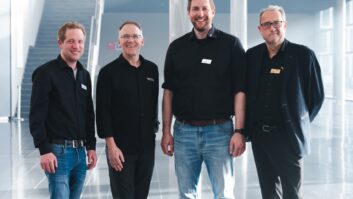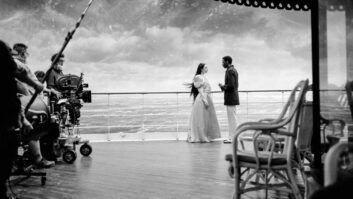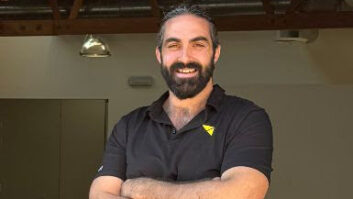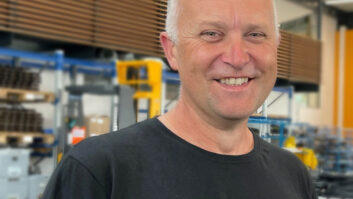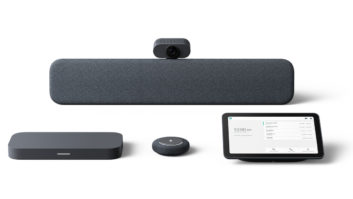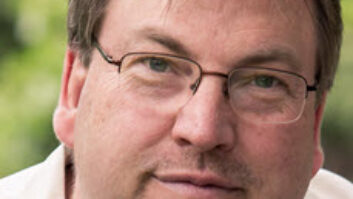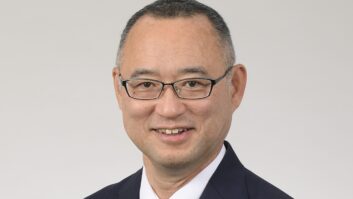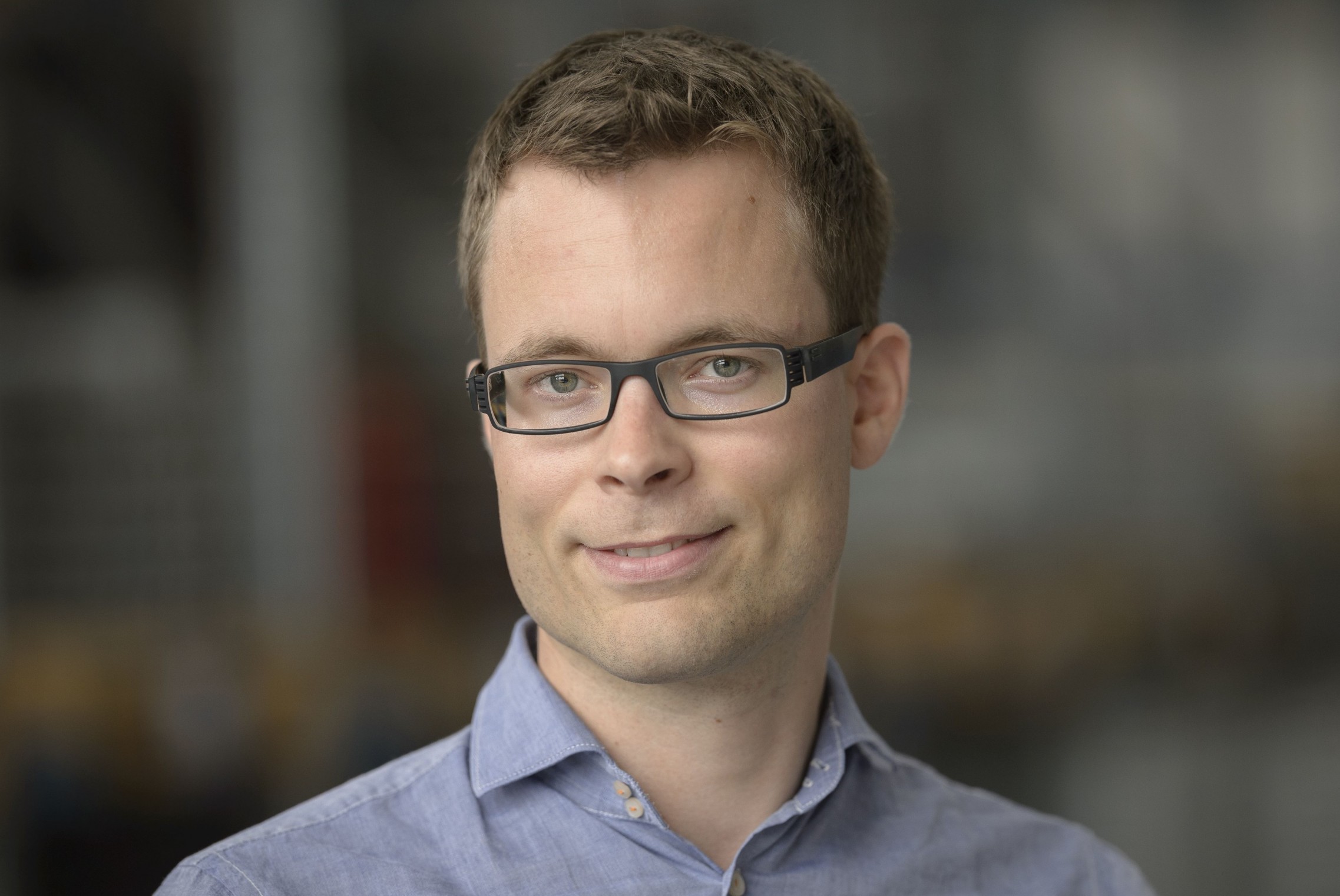
Forty years after the foundation of AV Stumpfl, Tobias Stumpfl moved into the driving seat at the media server and screen manufacturer last autumn. Paddy Baker asks him about how.
It’s always a major step when a family-owned company passes leadership on to the next generation. Last September, Tobias Stumpfl took over the CEO’s role at AV Stumpfl from his father Reinhold Stumpl, who founded the company in 1975. As if to underline the transition, just a few weeks later the grand opening took place of the company’s new €7 million campus in Wallern, northern Austria. Various large-scale interactive displays and projections entertained visitors and gave them a taste of some of the company’s forthcoming product lines.
Following his first ISE in his new role, Tobias Stumpfl talked to Installation about his plans for the company.
When you became CEO of the company last September, what was your first major action?
Together with my team we have focused our efforts on the most important priorities. We have created a dedicated service and project management department to increase our ability to help our customers all over the world.
During the last couple of years, we conducted intensive in-house research and invested a lot of time into developing new core technologies. Now we have put some of those technologies into new products which were unveiled at the ISE show in Amsterdam.
During the last couple of months, we have prepared a lot of new information about our products, typical applications and how to use them on our website. This was demonstrated to be very valuable especially for finding new potential customers so we are intensifying this even more.
My younger brother Fabian has now joined the company and he helps to achieve the new management goals.
In which areas are you looking to expand the company?
We plan to grow in various directions. First of all, we are developing new products, which cover more aspects of our current markets. This helps to provide more seamless solutions for our clients. We also have plans to grow into new geographic markets, which we currently cannot reach because we do not have access yet.
We will not just develop new products but also develop our global partner network. Probably the highest priority for us is promoting our current solutions, which we already have developed but nobody knows about them yet.
We are a research, development and manufacturing company, so sales and marketing aren’t our core strength yet – but will be.
You launched nine new products at ISE 2016. Which would you say is the most significant and why?
The most spectacular new products were Wings Engine Raw, which is a media server capable of delivering 8x4K uncompressed content at 60fps; and also our new Fullwhite Curve – a gigantic projection screen which has no visible border and can be curved to almost any radius.
What trends in customer requirements are you looking to address over the coming months and years?
This is difficult to predict as customer requirements change rapidly. All our core technologies are developed in a way that enables us to react quickly on changing market requirements. At the moment there is a strong tendency towards prioritising high quality be it in mechanical product quality, to content output quality and overall system reliability – so this is what we currently offer.
Should this change, we can be flexible enough to be the first to adopt any new requirements.
In fact the process is more than just fulfilling market requirements. If a customer already knows what he wants then he will be satisfied best with AV Stumpfl. However what we are aiming for is to better that and amaze our customers so this process needs some sort of a reciprocal inspiration. This is what we are particularly good at!
I was interested to learn that the company’s origins were not in projection screens, as many people think, but were in electronics and software – you moved into projection screens at the request of your customers. How much of your business is in show control/media servers on one hand, and projection screens on the other? Do you expect this ratio to change over the coming years?
In fact, it is changing every year depending on the demands of our customers and projects worldwide.
Our new software and hardware research and development centre is doubling its current floor space. At the moment, there is a strong shift towards software and hardware products. In the same process, we have invested a lot into new machinery for our production of mobile and stationary projection screens so although we do not need more space yet we can produce more products when that need arises.
This is especially important because our portfolio of different projection screens has also just been massively enlarged. We can store more raw materials, more components and produce more diverse products – all requiring more resources.
We own a lot of green land around our current campus which will allow us to increase production space but at the moment, we are collecting more experience to see where the highest potential for future growth.
At the moment, one of AV Stumpfl’s USPs is the sheer processing power of its hardware. Some industry observers believe that as mainstream PC computing power increases over the long term, manufacturers such as your selves are more likely to put their expertise into software that runs on standard PC hardware. Do you agree with this view, and if so does it worry you (that you might be losing a USP)?
I would not say our USP is the processing power of our hardware rather our USP is the clever use of the hardware’s limited resources. This is more a basic level software feature than a hardware feature. In fact, our challenge will always be to make the best result with the most economic platform.
Do you see projection mapping growing in importance over the coming years? If yes, will this growth be from fixed installations, events or both?
Projection mapping is one of those trends, which comes and goes on a regular basis. Our products are perfectly suitable for this since we have some unique features.
This market is only there as long as the end users are demanding it because they like the effect, the impressions and interactivity.
And those things change rapidly since they always want what the opinion leaders currently mark as a novelty and according to ‘trends’.
What is the best thing about working in a family owned company? Are there any disadvantages?
You need to ask this question to our employees! We believe it is our climate. By having open doors to everyone in the company, we can maintain a flat hierarchy, which means high efficiency. We invest massively into the best possible work conditions for our employees. This is not a flowery phrase here this is an everyday reality. Visitors who have been to our company in Wallern, Austria are intrigued and surprised about what they experience.
The downside of this is that it could happen some time that this open environment is abused by individuals so it requires constant caution. In larger public companies with strict rules and steep hierarchy, this would probably be less likely to happen.
What hobbies do you have? Do these feed into the business or provide a break from it?
Soaring which his otherwise known as sailplane racing or cross country flying. I also like mountain climbing and have been on expeditions in the Himalayas and Andes.
Both hobbies have challenges that are similar to running a business – you define a goal and find a way to reach it…
